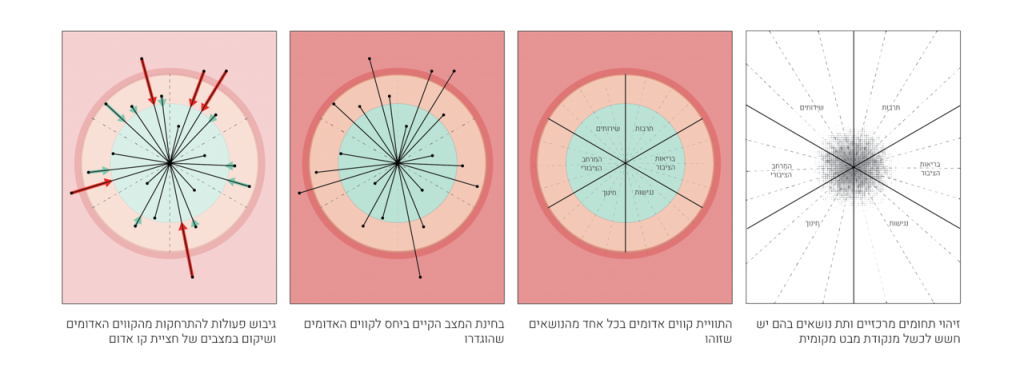Red Lines
Marking the red lines (i.e. where we don’t want to be) and developing steps to avoid them, in order to create a flexible network of responses in times of conflict and uncertainty.
Background: Why Red Lines?
During times of uncertainty in which multiple interests, details, and goals are at play, it is hard to define a desirable future, much less reach a broad consensus over one clear vision. On the other hand, it is possible to reach a broad consensus on undesirable situations. Red lines are boundaries to avoid in order to prevent undesirable situations.
Objective: Why is it Important to Set Red Lines?
The very act of setting red lines by a local community, enables them to clearly outline the “safety margins”, within local quality of life can be achieved. In a world of fast, unexpected changes, staying away from the red lines enables us to provide a set of flexible responses to the needs of local residents and visitors, and ensure a quality of life in the long-term.
Method: What Must We Do to Stay Away from Red Lines?
Staying away from the red lines requires determined, conscious action. The results of such actions may be measured, evaluated, and updated dynamically.
The stages:
- First stage – Identifying subjects where participants fear failure from a local perspective. Subjects, for example, could be: public health, housing, equality, education, culture, poverty, social and human capital, opportunities for the young generation, personal safety, children’s quality of life, burdens for future generation, service and accessibility levels, the environment, open areas and heritage areas.
- Second stage – Setting the red lines in each of the subjects that had been selected, in correlation with global benchmarks.
- Third stage – Evaluating the current situation regarding the identified red lines. It is possible to use the traffic light method to show the safety distance from the red line.
- Fourth stage – Initiating prevention actions that avoid getting to the red lines.
Process: How is it Done?
First, identifying the subjects and setting boundaries can be done by brainstorming, guided public participation or community meetings and professional guidance to reach consensus as much as possible. Second, comparing potential situations to current ones and proposing steps, both to avoid the red lines and to resolve present undesirable situations.
Result: What is the Benefit of Red Lines?
The community will develop a flexible set of boundaries and responses that will ensure a better quality of life. The very act of learning about the red lines can improve local cohesion, which protects the community and generates local cooperation.
Representation: The Red-Line “Traffic Light” Diagram
The red lines will be represented as a ‘traffic light’ diagram. Moreover, the various stages of the process will be documented and incorporated on Israel100’s website and adapted to a summary research framework.

 פרופ’ אלי שטרן
פרופ’ אלי שטרן פרופ’ ערן פייטלסון
פרופ’ ערן פייטלסון